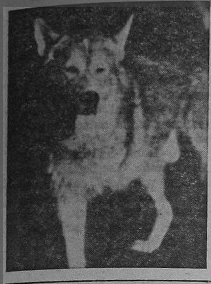
It’s pretty clear the the president of Cornell is first in command of the university. However, being that Cornell is a university with tends of thousands of students, thousands of employees, and multiple campuses, it stands to good reason to have a chief academic officer of sorts, a general supervisor of college affairs while the president represents the university’s “public image” and acts as chief fund-raiser. In comes the provost, a position created in 1931 by the Board of Trustees to manage the university’s myriad affairs. The provost is a sort of COO while the president is CEO.
Many of Cornell’s provosts haven’t been content with being second in command, the latest example being Provost Kent Fuchs leaving to become president of the University of Florida. Fuchs (pronounced “fox”) has been in the provost position since 2009. His predecessor, Carolyn “Biddy” Martin, who left to take over as president of the University of Wisconsin at Madison.
Let me run down the list of provosts since WWII and see what happened with each provost:
Arthur S. Adams (1946-1948): Bid adieu to Cornell when he was appointed president of the University of New Hampshire. He may not have liked UNH much, because he left in 1950 to head the American Council on Education, and from there on a number of other academic leading roles. He passed away in 1980.
Before someone calls me out for not including the provost in 1945, there was no serving provost from 1944-1946. Former Ag school dean Albert Mann (1931-1936) and former Packard Motors executive H. Wallace Peters (1936-1943) both retired after serving as provost.
Cornelis de Kiewiet (1948-1951): Departed when he was selected as president of the University of Rochester, a position that he served in from 1951-1961, from which he retired and spent the rest of his years working as a proponent of investing in higher education programs in Africa. A rather unattractive brutalist dorm at the UofR is named after him.
Forrest Hill (1952-1955): I should note that provosts under President Mallott seemed to have less power than more recent ones; Mallott enjoyed his authority, something that also led to the student riots of 1958. Hill left to head the Overseas Development for the Ford Foundation, and established rice-breeding institutes that increased yields substantially, and helped propel the “green revolution” of the mid-20th century. Forrest Hill retired to Ithaca in 1976 and passed away 12 years later.
Sanford Atwood (1955-1963): Left in 1963 to serve as president of the prestigious southern college Emory University, where he was president from 1963-1977 (and where has a building named in his honor). While at Emory, Atwood became best-known for standing behind a professor who declared a belief that “God is dead”, which didn’t go over very well at the traditionally Methodist institution. He retired from Emory and passed away in 2002.
Dale Corson (1963-1969): The only recent case of a provost becoming president, as a result of James Perkins’s resignation following the Willard Straight takeover. Corson, for whom Corson Hall is dedicated, served as Cornell’s leader from 1969-1977, and lived in Ithaca up to his passing in 2012 at the age of 97.
Robert A. Plane (1969-1973): Left Cornell to serve as president and CEO of Clarkson University, where he served from 1974-1985. After he retired from that position, he became a winemaker, and eventually came back to work for Cornell as head of the university’s Ag Experiment Station in Geneva from 1986-1990. After he retired again, he served as president of Wells College from 1991-1995, though the college was still all-female at the time. He’s totally, completely retired now, and still kicking at the age of 87.
David Knapp (1974-1978): Left to become the president of the University of Massachusetts, where he served as president from 1978-1990, and retired from his professorial duties in 1993. It was Knapp who suggested changing the name of the College of Home Economics to the College of Human Ecology, while he was dean of the college.
W. Keith Kennedy (1978-1984): For whom Kennedy hall on the Ag Quad is named. He retired at the end of his term, but served on a number of Cornell committees and Ithaca-based foundations and boards for the rest of his life. Kennedy passed away in Ithaca in 2011 at the age of 92.
Robert Barker (1984-1991): Retired from Cornell in 1995, according to the Office of the Provost website, and moved to Washington State.
Malden “Mal” Nesheim (1989-1995): Note the overlap with Robert Barker; Barker served as “senior provost and COO”, the only time that position has ever existed, from 1989-1991. Nesheim became provost emeritus in 1995, and is a professor emeritus of the Nutritional Science department, taking part in various committees well into the 2000s.
Don Randel (1995-2000): Left in 2000 to become the president of the University of Chicago. Left U. Chicago in 2005 to take over as president of the Mellon Foundation. It appears he’s since retired.
Carolyn “Biddy” Martin (2000-2008): Left to take over of the University of wisconsin at Madison. Left that position in 2011 to become president of Amherst College, a small but prestigious liberal arts school in Massachusetts.
W. Kent Fuchs (2009-2014): Leaving to take over as president of the University of Florida.
So, since WWII and excluding Corson, 8 of the 12 provosts have gone on to serve other schools, and only 3 of 12 stayed with Cornell through retirement. The position is often a high-level stepping stone for administrators with grand aspirations. Not to say they don’t care about Cornell, not true at all; but there’s a good chance that Cornell won’t be throwing a retirement party for the next provost.

























